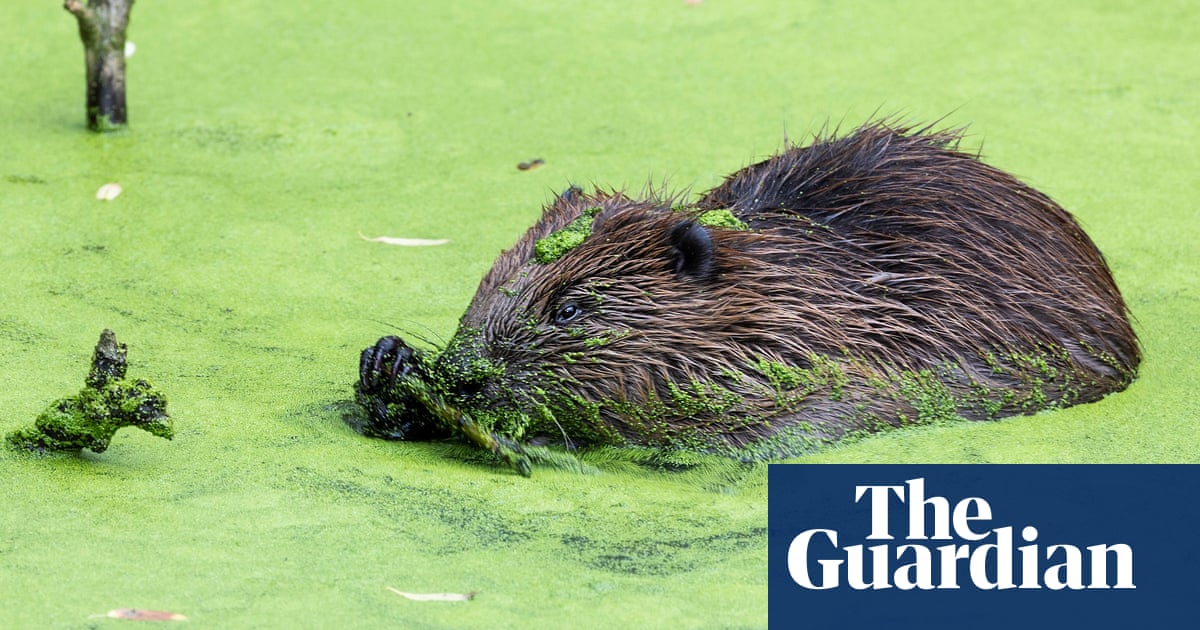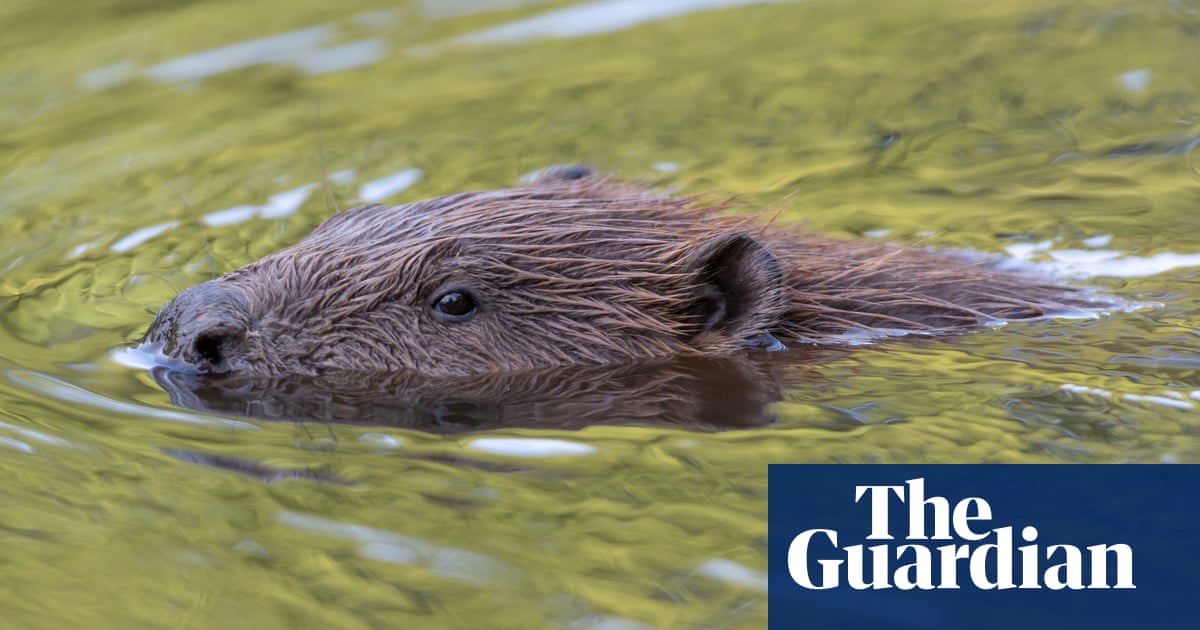
A baby beaver has been born on Exmoor for the first time in 400 years after two adults were successfully reintroduced by the National Trust in January 2020.
Camera footage shows the six-week-old kit swimming to the family lodge with its mother in a large enclosure on the Holnicote Estate in Somerset, where two Eurasian beavers were released for the first time in the trust’s 125-year history.
Park authorities had an inkling that the pair had successfully mated because the male starting dragging more wood and vegetation around their den in late spring. “The female also changed her usual habits, and stayed out of sight, leaving the male to work alone,” said Jack Siviter, one of the rangers on the Holnicote Estate.
“It was then several weeks until we spotted her again, and this is when our suspicions were confirmed that she had given birth, due to having very visible teats.”
The first-time mother was named Grylls, after TV adventurer Bear Grylls, because she has a strong survival instinct. Rangers said they were particularly pleased to see the female had a kit because she had been orphaned at an early age. Young beavers stay with their parents for about two years before they leave to build a territory of their own.
The semi-aquatic rodents are “ecosystem engineers” and were released on the estate to ease flooding and increase biodiversity. Since arriving they have transformed the unmanaged woodland in their 2.7 hectare enclosure into a more open wetland. This has created diverse habitats that benefit a range of wildlife, including sparrow hawks, grey wagtails, herons, moorhens and kingfishers.
Beaver dens are made of trees, mud, stones and vegetation, which slows the flow of water, creating a mosaic of dams, ponds and channels. By felling trees they have created more light, attracting delicate plants such as sanicle and marsh marigold, as well as valuable dead wood habitat for bats, owls, woodpeckers and invertebrates. Otters have been seen more regularly at the site since the beavers arrived.
“The transformation of the habitat has been remarkable,” said Ben Eardley, project manager for the National Trust at Holnicote. “To go from dry unmanaged woodland to a more open wetland complex in such a short time has not only boosted the variety of wildlife that we’re seeing on the estate, but also numbers.
“This is really important because the beavers are doing a lot of what we want to see in terms of conservation and land management. They are letting the light and the water into the site, helping natural processes and providing opportunities for a host of other wildlife,” he added.
Beavers were hunted to extinction in Britain in the 16th century for their meat, fur and scent glands but have been reintroduced at several sites since early 2000s. The project is part of the National Trust’s Riverlands programme, which aims to increase biodiversity in UK rivers and tackle the effects of climate change.
The new arrival does not yet have a name. The National Trust will be putting a call out for suggestions on social media in the coming days.












